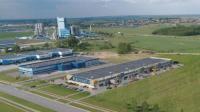Developing nations dominate free zone investment flows

Global free zones may be spurring development in less economically developed countries
Special economic zones in Asia-Pacific, the Middle East and Emerging Europe receive more FDI investment than the rest of the world combined, according to a study on free and special economic zones by crossborder investment monitor fDi Markets.
Since 2015, fDi Markets has recorded greenfield investments into 681 global free zones (GFZs) across the globe. It found that $110.83bn was invested in these GFZs between 2015-2018, $98.47bn of that in Asia-Pacific, the Middle East or Emerging Europe. However, growth in African GFZ investment was extremely significant, as the amount of capital expended increased by 400% between 2016 to 2018.
Spurring development
The figures demonstrate that GFZs may be spurring development in less economically developed countries, such as India, Poland, and Costa Rica. fDi Markets found that GFZ global investment directly created an estimated 454,200 jobs, with the large majority of those jobs located in the Asia-Pacific, Emerging Europe and Africa regions. Approximately 50,000 jobs were created by GFZ investment in Africa alone.
China, Vietnam and India collectively make up 64% of GFZ FDI investment from 2015-2019. Indian GFZs grew dramatically between 2017 to 2018, with a 230% increase in the number of GFZ projects. GFZs in the Asia-Pacific region also saw a rise in chemical investment, as the number of chemical projects rose from 3 to 19 between 2015 to 2018. Japan, the US, and Germany were the three most common source markets for GFZ investment in the region.
African appeal
The number of FDI-funded GFZ projects in Africa more than doubled in 2016-2017, with China, France and India being the most common sources of investment in Africa. 59 of the 114 FDI-funded projects in Africa are in Morocco, with 16% of African market share being held by the Tanger Med GFZ alone. Shandong Ruyi Technology Group, a textile manufacturer, invested $830m in September 2018 to establish textile manufacturing facilities in Egypt’s Suez Canal GFZ. This landmark investment was part of China’s large increase in GFZ projects in Africa from 2015 to 2018. Auto components, transportation and warehousing, and electronic components were the most common industries to invest in GFZs during this period.
The UAE received the majority of Middle Eastern GFZ investment, with the 416 FDI projects in the UAE making up 91% of all Middle Eastern projects. GFZs are a cornerstone of the UAE’s economic strategy, as the DMCC Free Zone currently contributes more than 10% towards Dubai’s GDP. The DMCC has won also fDi Magazine’s Global Free Zone of the Year award for the past five years. Middle Eastern investment from the US increased by 39%, while German investment increased by 57% from 2017 to 2018. GFZ investment from the UK to the Middle East decreased by 58% in the same period, suggesting that UK firms became less confident in Middle Eastern GFZs.
Poland, Russia and Serbia were the most common destinations for GFZ investment in Emerging Europe. The number of GFZ projects in Belarus increased by 500% from 2017 to 2018. Manufacturing investment was the most common form of investment in the region, as the three most common industries for investment were automotive manufacturing, electronic component manufacturing and the production of industrial equipment. Poland’s Katowice GFZ was the best performing in the region, having attracted 66 new projects and €1.14bn in new investment since the beginning of 2018. The US, Germany and Italy were the most common source markets for the region.
Costa Rica, Cuba, and Colombia were the most common destinations for GFZ investment in Latin America and the Caribbean. Cuba’s economic liberalisation has seen its Mariel GFZ host the most foreign GFZ investment in the region, which has a reputation for a skilled workforce and a welcoming regulatory environment. The US, Germany and China were the most common sources of investment in the region, with the US holding 37% of the regions market share.
Proximity to customers, the domestic regulatory environment and domestic market growth were cited frequently as key motivation factors by GFZ investors.

Global greenfield investment trends
Crossborder investment monitor
|
|
fDi Markets is the only online database tracking crossborder greenfield investment covering all sectors and countries worldwide. It provides real-time monitoring of investment projects, capital investment and job creation with powerful tools to track and profile companies investing overseas.
Corporate location benchmarking tool
fDi Benchmark is the only online tool to benchmark the competitiveness of countries and cities in over 50 sectors. Its comprehensive location data series covers the main cost and quality competitiveness indicators for over 300 locations around the world.
Research report
fDi Intelligence provides customised reports and data research which deliver vital business intelligence to corporations, investment promotion agencies, economic development organisations, consulting firms and research institutions.
Find out more.




